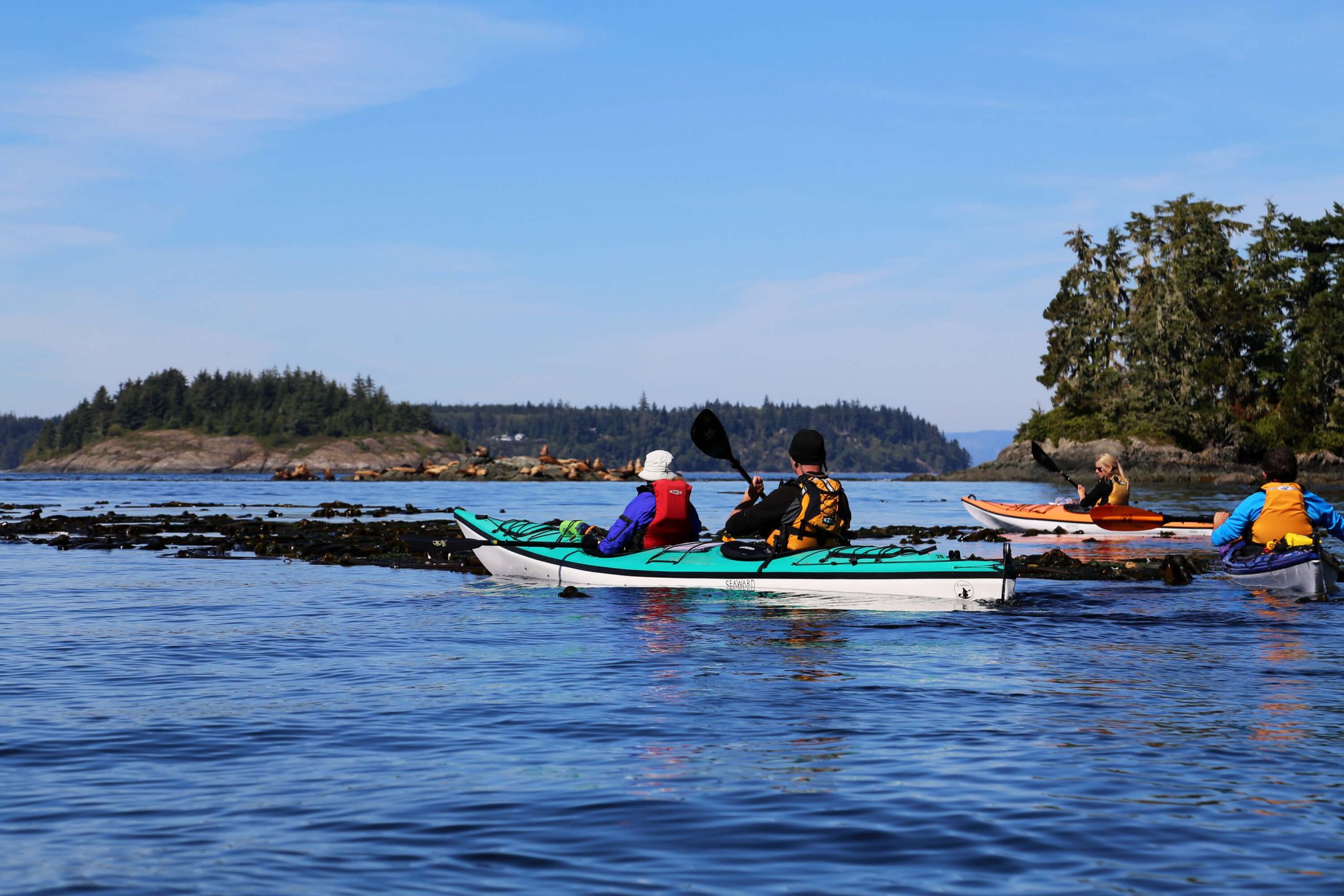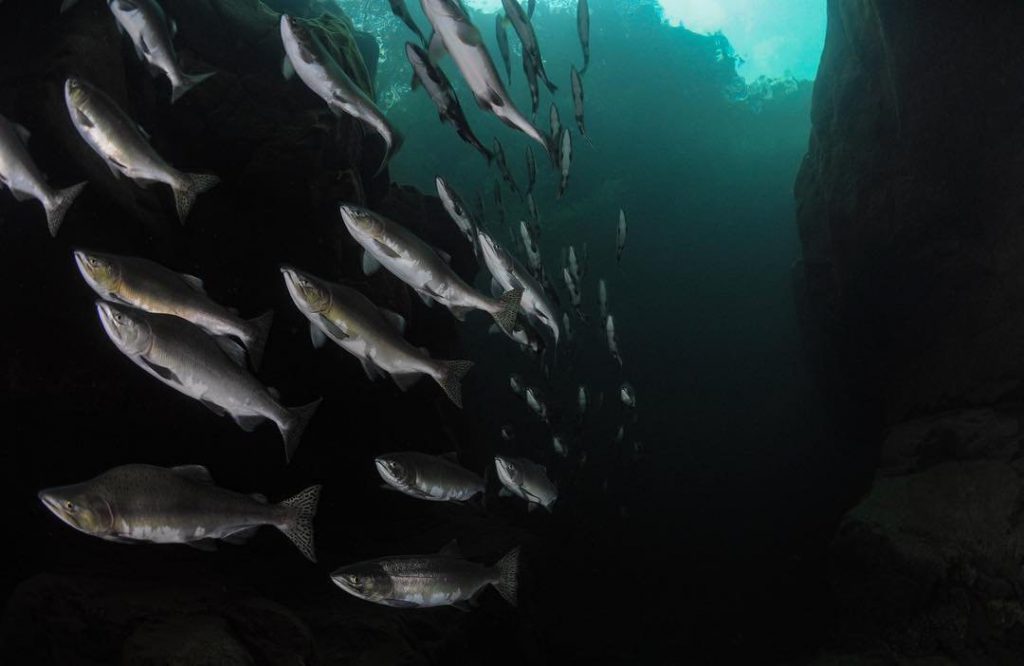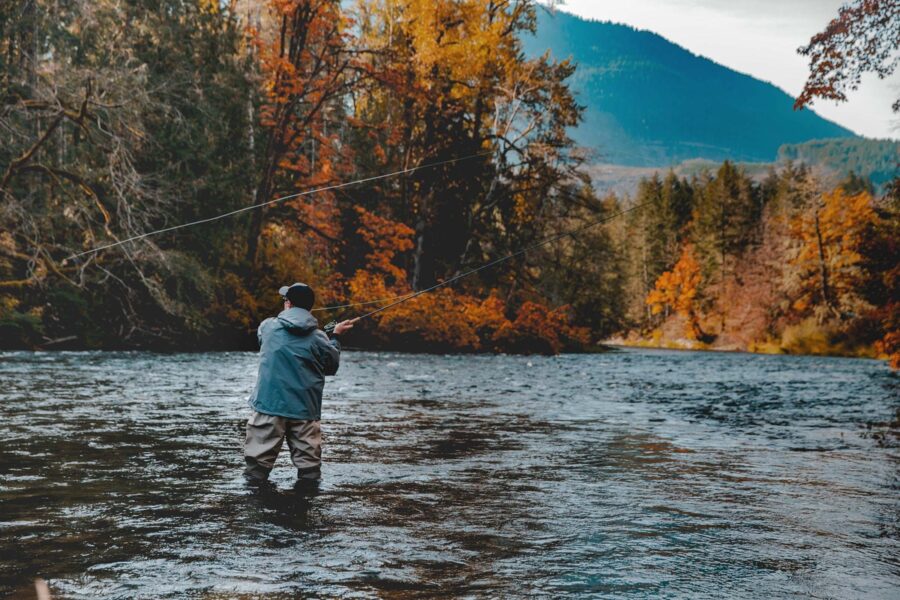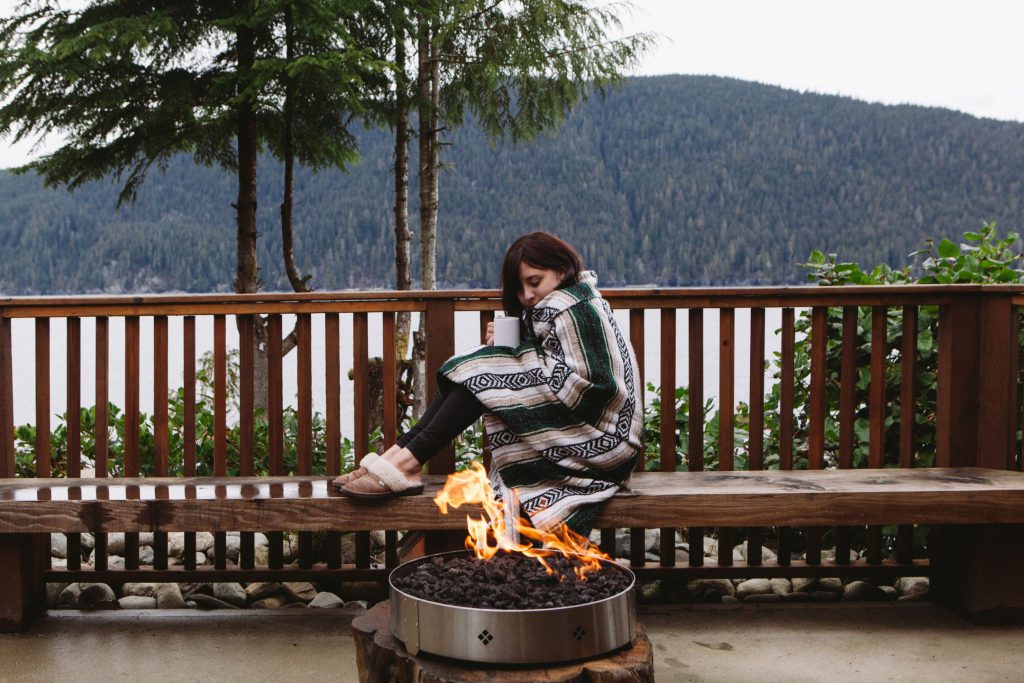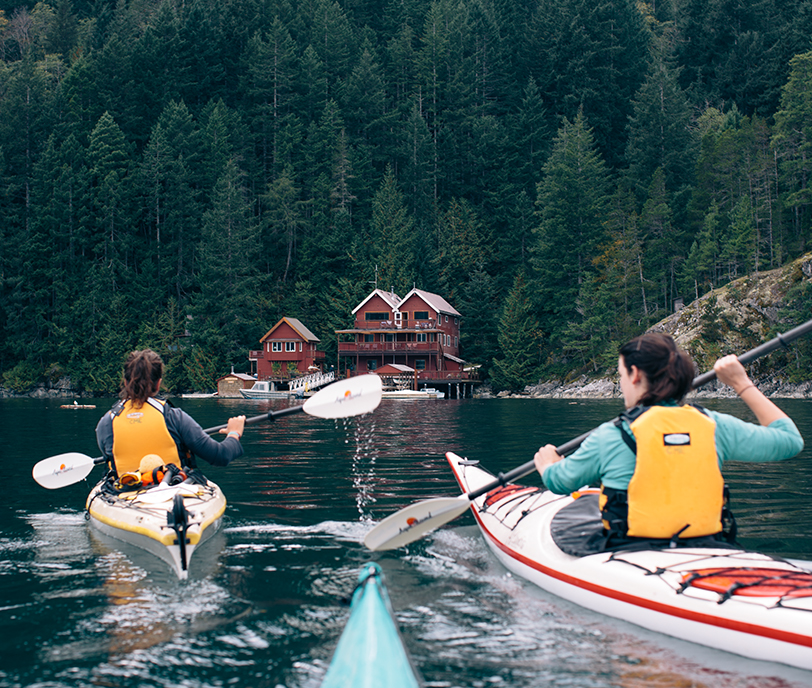For many, the allure of visiting Northern Vancouver Island rests on its incredible wildlife viewing opportunities. And it’s true there are many.
Tours take you into remote and wildlife-rich areas, like the Broughton Archipelago, and Knight Inlet, where grizzly and black bears roam the lush temperate rainforest. In Alert Bay, eagles swoop and soar looking for salmon and other fish with their razor-sharp vision and talons. Over on Malcolm Island, locals will tell you incredulous but true tales where orcas on—very rare—occasions come to the shoreline to rub their bellies on smooth rocks in behaviour not recorded anywhere else.
It’s easy, in a place like the Johnstone Strait, where seclusion and solitude is broken most often by wild creatures than people, to feel a kindred connection to animals. But wild creatures are wild for a reason. Which is why it’s important to Northern Vancouver Island tour operators, including Kingfisher Wilderness Adventures and Sea Wolf Adventures, to practice responsible wildlife viewing.
What’s Responsible Wildlife Viewing?
Responsible wildlife viewing boils down to ensuring your actions—as an individual, a group and that of the tour operator—does not cause an animal to change their normal behaviour.
Research has shown that interfering with the path of an orca will change their travel paths, often disturbing their feeding or resting patterns. Likewise, with bears and wolves.
It’s important to remember that in the rainforest, everything is connected. Studies have also shown that a diversity of salmon species is more critical to a coastal black bear’s health (as opposed to biomass), and that grizzly bears drag salmon carcasses into the forest to feed, where their nutrients decompose and fertilize the soil. Leaving as little trace as possible helps to maintain the natural and precious balance of the ecosystem.
Other aspects of responsible wildlife viewing include maintaining a safe distance, reducing noise, and limiting viewing time.
How to Practice Responsible Wildlife Viewing
It’s human nature to want to get “up close and personal” with an animal. But for your safety, and the safety of the animals, it’s important to exercise caution and remain a respectful distance.
Patience, too, is required. In this instantaneous world where gratification is not always synonymous with effort, it can feel even more rewarding when a long-awaited glimpse of a bear comes into focus or when you finally spot the graceful fluke of a humpback tail.
Here are the guidelines for responsible wildlife viewing below.
Maintain Your Distance
With any animal view or photograph them from a distance that respects their needs. Use a telephoto lens to snap that coveted portrait or opt for a set of binoculars to sit and watch in awe. What constitutes as respectful distance? See below:
Whales:
Tour operators and vessels must keep a minimum approach distance of 200 metres of orcas in all Pacific waters, as well as whales, dolphins and porpoise species with calves in resting positions. They must keep a minimum distance of 100 metres for all other whales, dolphins and porpoises.
Canada’s Marine Mammal Regulations also ensures that tour operators do not attempt to feed a marine mammal, swim or interact with it, move it or entice it to move from its immediate vicinity, separate it from members of its group, trap it or its group between a vessel and the shoreline, or tag or mark it.
Bears and wolves:
A minimum distance of 100 yards must be maintained. Wolves are rare to spot and often will keep their own distance. Bears, especially during salmon season, are more likely to be spotted so if you come across one while on a tour or camping or hiking keep your distance and make sure you’re being bear aware.
Eagles and other animals:
Like the other animals on this list, maintaining 100 metres is a good rule of thumb. Eagles on Northern Vancouver Island are often spotted where there is shallow shoreline and lots of fish to eat. It’s easy to come across one unexpectedly. If you do, don’t charge, approach, or startle it.
Do Not Feed Wildlife & Limit Human Interactions
“A fed bear is a dead bear.” Keep this slogan in mind and you’ll do your part to protect and preserve the amazing creatures in our backyard. Likewise, seals, eagles, and other small marine mammals should never be fed. It can be tempting to offer a cute seal pup a piece of leftover salmon, but interfering with animal’s eating behaviours and patterns causes unnatural food dependency, habituation to humans, disease and even death. Even repeated interactions with vessels and kayakers can cause habituation where the risk of vessel strike increases.
Be sure to limit your garbage too; whether you’re camping, hiking, or on a tour, pack out what you pack in. This includes opting for as little plastic as possible or harmful pollutants like styrofoam that are impacting our marine health.
Go Slowly & Keep Noise to a Minimum
Remember: you are a guest in wildlife habitat. When you see an animal, go slowly. Loud noises can startle and stress wildlife—especially when they are breeding, nesting, brooding, or with young.
For motorized whale watching tours, the phrase “see a blow, go slow” is a known reminder to take it slow around these magnificent creatures. When you’re on a motorized tour, the operator’s speed should be no more than 7 knots when 400m from a whale. They should also stay clear of the whale’s path, and if a whale surfaces within 200m of the vessel, the engine should be shut off until the whales are beyond the required minimum distance. Kayaks, on the other hand, typically reach speed a top speed of 3 Knots, so it’s naturally a less-obtrusive way to take in the splendour of whales. Though even in a kayak, it’s best-practice to raft-up to avoid interrupting these aquatic giants.
Tour operators should be cautious and courteous when areas of known or suspected wildlife activity. This includes in the water, near bird colonies on land or watching bears along the shoreline from a boat.
Limit Your Viewing Time.
Tour operators who practice responsible wildlife viewing should limit viewing times to 30 minutes or less. This helps reduce the cumulative impact and gives considerations to other viewers. It can be tempting, especially when you finally spot an animal, to want to soak it in as much as possible. Instead, the thrill of spotting an orca gracefully coming up for air or if you’re lucky, a humpback whale breaching, exists simply because they are wild—these fleeting moments remind us that we’re all guests on earth.
Choosing the Right Operator.
A good tour operator will not only practice these responsible wildlife viewing principles but explain their importance to you. Other factors in choosing an operator includes training and qualifications, as well as a company’s ethics and approach. Be sure to do your research ahead of time (we list two great companies below).
When it comes to whale watching tours, Northern Vancouver Island operators have gone above and beyond to ensure the health of marine mammals in their backyard, including developing additional guidelines specific to the region. These include the “whale watch flag,” pioneered by North Island Marine Mammal Stewardship Association (NIMMSA). Whale watch operators fly a flag to notify transiting vessels in the area if whales are in the area. It’s now being adopted by operators throughout BC and Washington State.
Northern Vancouver Island Responsible Wildlife Viewing Operators Viewing Operators
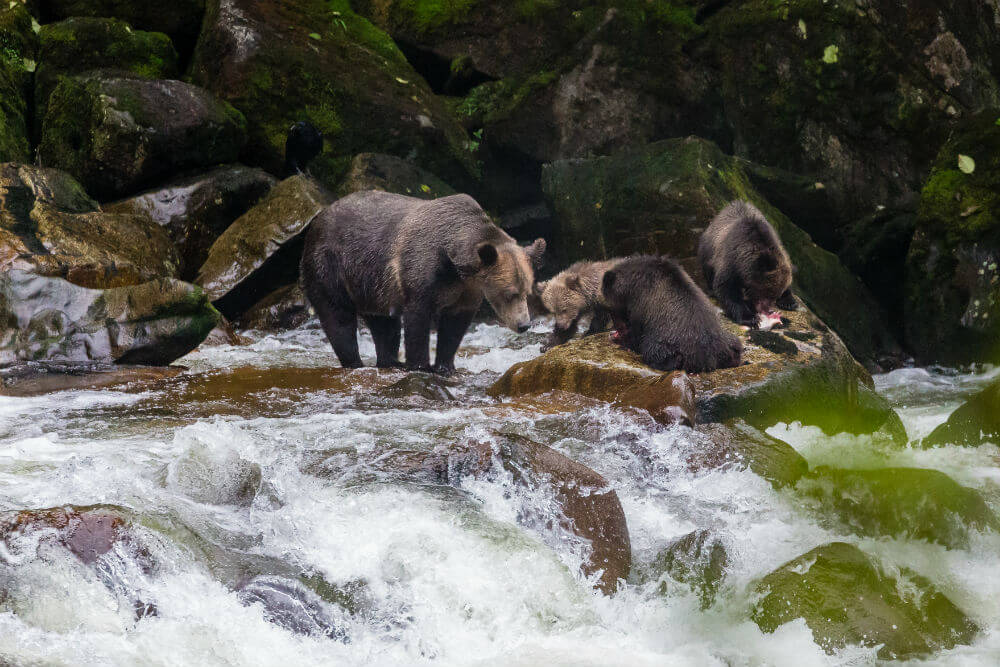 Kingfisher Wilderness Adventures, based out of Port McNeill, focuses on full-service kayak tours—one of the least obtrusive ways to view wildlife. Add in knowledgeable guides who impart a greater understanding of the local wildlife and ecosystem, and a tour becomes a much greater educational experience.
Kingfisher Wilderness Adventures, based out of Port McNeill, focuses on full-service kayak tours—one of the least obtrusive ways to view wildlife. Add in knowledgeable guides who impart a greater understanding of the local wildlife and ecosystem, and a tour becomes a much greater educational experience.
Sea Wolf Adventures are boat-based wildlife and cultural tours is also based out of Port McNeill. This Indigenous-owned operator will inspire a deeper connection to the beauty of the Musgamakw Dzawada’enuxw peoples and the Great Bear Rainforest through safe, educational and informative tours.
Visit Kingfisher Wilderness Adventures
Kingfisher Wilderness Adventures and Sea Wolf Adventures have partnered up to host the 4-day Whales and Grizzly Bears Kayak Tour, to offer you the best wildlife viewing the area has to offer. To learn more about their other tours and experiences, visit Kingfisher.ca.
